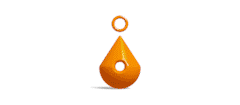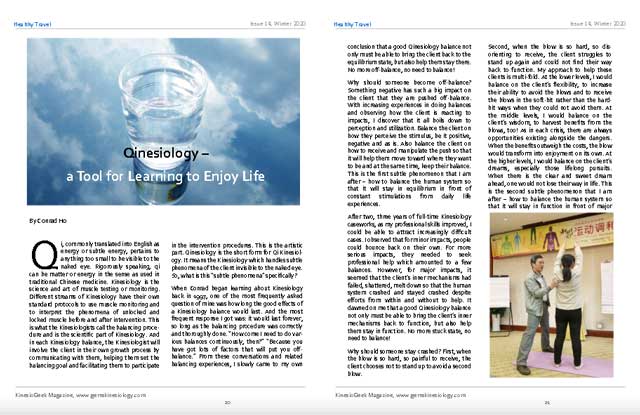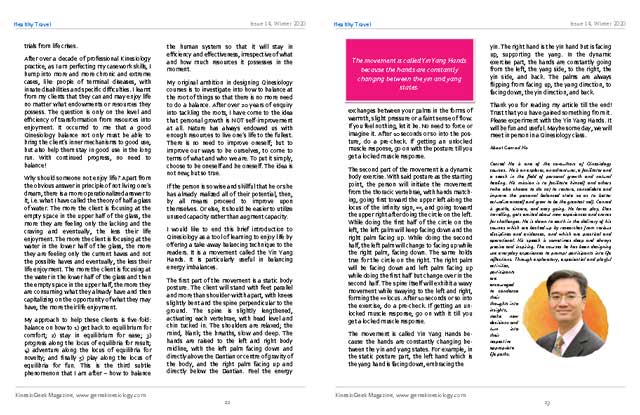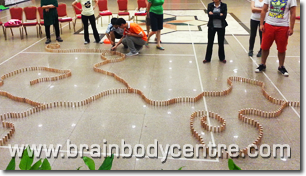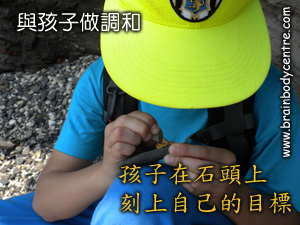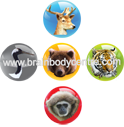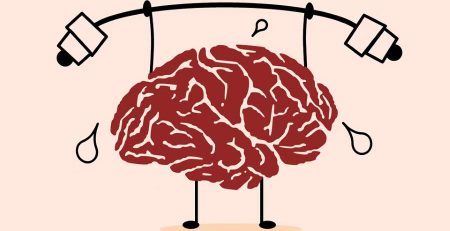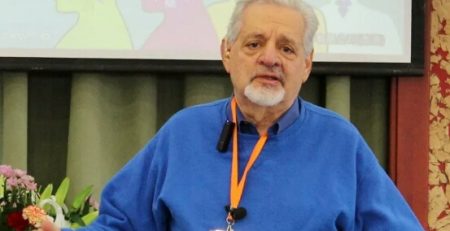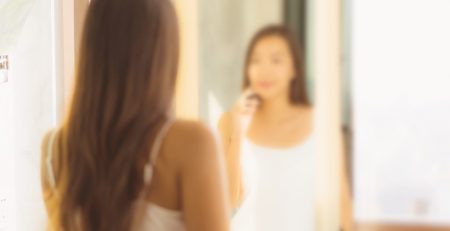Qinesiology® – a Tool for Learning to Enjoy Life
by Conrad Ho on January 1, 2020, written in Hong Kong
Qi, commonly translated into English as energy or subtle energy, pertains to anything too small to be visible to the naked eye. Rigorously speaking, qi can be matter or energy in the sense as used in traditional Chinese medicine. Kinesiology is the science and art of muscle testing or monitoring. Different streams of Kinesiology have their own standard protocols to use muscle monitoring and to interpret the phenomena of unlocked and locked muscle before and after intervention. This is what the Kinesiologists call the balancing procedure and is the scientific part of Kinesiology. And in each Kinesiology balance, the Kinesiologist will involve the client in their own growth process by communicating with them, helping them set the balancing goal and facilitating them to participate in the intervention procedures. This is the artistic part. Qinesiology® is the short form for Qi Kinesiology. It means the Kinesiology which handles subtle phenomena of the client invisible to the naked eye. So, what is this “subtle phenomena” specifically?
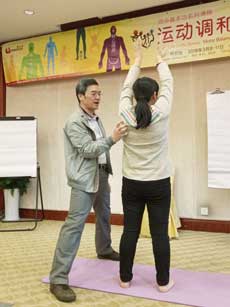
When Conrad began learning about Kinesiology back in 1997, one of the most frequently asked question of mine was how long the good effects of a Kinesiology balance would last. And the most frequent response I got was: it would last forever, so long as the balancing procedure was correctly and thoroughly done. “How come I need to do various balances continuously, then?” “Because you have got lots of factors that will put you off-balance.” From these conversations and related balancing experiences, I slowly came to my own conclusion that a good Qinesiology balance not only must be able to bring the client back to the equilibrium state, but also help them stay there. No more off-balance, no need to balance!
Why should someone become off-balance? Something negative has such a big impact on the client that they are pushed off-balance. With increasing experiences in doing balances and observing how the client is reacting to impacts, I discover that it all boils down to perception and utilization. Balance the client on how they perceive the stimulus, be it positive, negative and as is. Also balance the client on how to receive and manipulate the push so that it will help them move toward where they want to be and at the same time, keep their balance. This is the first subtle phenomenon that I am after – how to balance the human system so that it will stay in equilibrium in front of constant stimulations from daily life experiences.
After two, three years of full-time Kinesiology caseworks, as my professional skills improved, I could be able to attract increasingly difficult cases. I observed that for minor impacts, people could bounce back on their own. For more serious impacts, they needed to seek professional help which amounted to a few balances. However, for major impacts, it seemed that the client’s inner mechanisms had failed, shattered, melt down so that the human system crashed and stayed crashed despite efforts from within and without to help. It dawned on me that a good Qinesiology balance not only must be able to bring the client’s inner mechanisms back to function, but also help them stay in function. No more stuck state, no need to balance!
Why should someone stay crashed? First, when the blow is so hard, so painful to receive, the client chooses not to stand up to avoid a second blow. Second, when the blow is so hard, so dis-orienting to receive, the client struggles to stand up again and could not find their way back to function. My approach to help these clients is multi-fold. At the lower levels, I would balance on the client’s flexibility, to increase their ability to avoid the blows and to receive the blows in the soft-hit rather than the hard-hit ways when they could not avoid them. At the middle levels, I would balance on the client’s wisdom, to harvest benefits from the blows, too! As in each crisis, there are always opportunities existing alongside the dangers. When the benefits outweigh the costs, the blow would transform into enjoyment on its own. At the higher levels, I would balance on the client’s dreams, especially those lifelong pursuits. When there is the clear and sweet dream ahead, one would not lose their way in life. This is the second subtle phenomenon that I am after – how to balance the human system so that it will stay in function in front of major trials from life crises.
After over a decade of professional Kinesiology practice, as I am perfecting my casework skills, I bump into more and more chronic and extreme cases, like people of terminal diseases, with innate disabilities and specific difficulties. I learnt from my clients that they can and may enjoy life no matter what endowments or resources they possess. The question is only on the level and efficiency of transformation from resources into enjoyment. It occurred to me that a good Qinesiology balance not only must be able to bring the client’s inner mechanisms to good use, but also help them stay in good use in the long run. With continued progress, no need to balance!
Why should someone not enjoy life? Apart from the obvious answer in principle of not living one’s dream, there is a more operationalized answer to it, i.e. what I have called the theory of half a glass of water. The more the client is focusing at the empty space in the upper half of the glass, the more they are feeling only the lacking and the craving and eventually, the less their life enjoyment. The more the client is focusing at the water in the lower half of the glass, the more they are feeling only the current haves and not the possible haves and eventually, the less their life enjoyment. The more the client is focusing at the water in the lower half of the glass and then the empty space in the upper half, the more they are consuming what they already have and then capitalizing on the opportunity of what they may have, the more their life enjoyment.
My approach to help these clients is five-fold: balance on how to 1) get back to equilibrium for comfort; 2) stay in equilibrium for ease; 3) progress along the locus of equilibria for result; 4) adventure along the locus of equilibria for novelty; and finally 5) play along the locus of equilibria for fun. This is the third subtle phenomenon that I am after – how to balance the human system so that it will stay in efficiency and effectiveness, irrespective of what and how much resources it possesses in the moment.
My original ambition in designing Qinesiology courses is to investigate into how to balance at the root of things so that there is no more need to do a balance. After over 20 years of enquiry into tackling the roots, I have come to the idea that personal growth is NOT self-improvement at all. Nature has always endowed us with enough resources to live one’s life to the fullest. There is no need to improve oneself; but to improve our ways to be ourselves, to come to terms of what and who we are. To put it simply, choose to be oneself and be oneself. The idea is not new, but so true.
If the person is so wise and skillful that he or she has already realized all of their potential, then, by all means proceed to improve upon themselves. Or else, it should be easier to utilize unused capacity rather than augment capacity.
I would like to end this brief introduction to Qinesiology as a tool of learning to enjoy life by offering a take-away balancing technique to the readers. It is a movement called the Yin Yang Hands. It is particularly useful in balancing energy imbalances.
The first part of the movement is a static body posture. The client will stand with feet parallel and more than shoulder-width apart, with knees slightly bent and the spine perpendicular to the ground. The spine is slightly lengthened, activating each vertebrae, with head level and chin tucked in. The shoulders are relaxed; the mind, blank; the breaths, slow and deep. The hands are raised to the left and right body midline, with the left palm facing down and directly above the Dantian or centre of gravity of the body, and the right palm facing up and directly below the Dantian. Feel the energy exchanges between your palms in the forms of warmth, slight pressure or a faint sense of flow. If you feel nothing, let it be. No need to force or imagine it. After 10 seconds or so into the posture, do a pre-check. If getting an unlocked muscle response, go on with the posture till you get a locked muscle response.
The second part of the movement is a dynamic body exercise. With said posture as the starting point, the person will initiate the movement from the thoracic vertebrae, with hands matching, going first toward the upper left along the locus of the infinity sign, ∞, and going toward the upper right after doing the circle on the left. While doing the first half of the circle on the left, the left palm will keep facing down and the right palm facing up. While doing the second half, the left palm will change to facing up while the right palm, facing down. The same holds true for the circle on the right. The right palm will be facing down and left palm facing up while doing the first half but change over in the second half. The spine itself will exhibit a wavy movement while swaying to the left and right, forming the ∞ locus. After 10 seconds or so into the exercise, do a pre-check. If getting an unlocked muscle response, go on with it till you get a locked muscle response.
The movement is called Yin Yang Hands because the hands are constantly changing between the yin and yang states. For example, in the static posture part, the left hand which is the yang hand is facing down, embracing the yin. The right hand is the yin hand but is facing up, supporting the yang. In the dynamic exercise part, the hands are constantly going from the left, the yang side, to the right, the yin side, and back. The palms are always flipping from facing up, the yang direction, to facing down, the yin direction, and back.
Thank you for reading my article till the end! Trust that you have gained something from it. Please experiment with the Yin Yang Hands. It will be fun and useful. Maybe some day, we will meet in person in a Qinesiology® class.
Special thanks
Special thanks to KinesioGeek Magazine, a quarterly digital publication by Alexis Costello of Costa Rica.
Issue 14 – Conrad Ho’s article – Qinesiology – a Tool for Learning to Enjoy Life:
https://issuu.com/specializedkinesiologymagazine/docs/healthy_travel_layout
